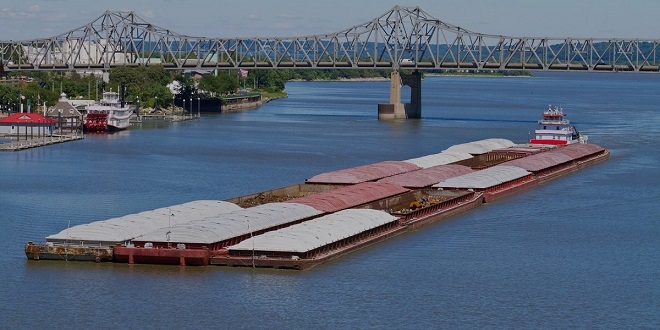A new report by Vanderbilt transportation and environmental engineers looks toward decarbonization of U.S. waterways and evaluates the potential for possible future propulsion technologies and alternative fuels to reduce carbon emissions.
Ocean shipping, along with many other economic sectors, has been focused for several years on decarbonization, consistent with the United Nations Sustainable Development Goal 13 (taking urgent action to combat climate change) and the United Nations Framework Convention on Climate Change (UNFCCC).
The International Maritime Organization (IMO) and numerous ocean carriers and shippers have, for some years, been evaluating and working towards aggressive goals and strategies to dramatically reduce greenhouse gas (GHG) emissions in international shipping. In support of these efforts, ABS has issued comprehensive reports on different pathways to lower (and ultimately eliminate) GHG emissions in ocean shipping.
Market pressures and international policy and regulations are largely driving the decarbonization initiatives in the international shipping sector; however, those drivers are only recently beginning to emerge for domestic shipping, especially with respect to freight shipping on inland waterways in North America (and the U.S. in particular). Examination of pathways toward decarbonization of the inland waterway sector is in its infancy.
This report aims to inform key stakeholders by identifying challenges and opportunities that will be faced in moving toward a carbon neutral and zero-carbon future on the inland waterways. The report also includes prospects for furthering the sustainability advantages that barge transport has relative to other surface transportation modes.
This report establishes a supportable estimate of the current GHG emissions profile for the inland waterway fleet.
The report also evaluates the potential for currently available and possible future propulsion technologies and alternative fuels that may reduce carbon emissions on the inland waterways, and sets forth existing policy challenges, infrastructure needs and competitive market realities and trajectories that present opportunities for and challenges to decarbonization.
In particular, the report demonstrates the feasibility of near-term electrification of smaller vessels operating on the inland river system through a case study and renderings of a weighted and balanced electrified boat in a retrofit application. As battery technologies continue to improve, this approach has potential application in even the largest operating towboats.
Key conclusions of the report include the following:
- The current GHG emissions profile of the inland waterway sector is low compared to other freight modes.
- The inland waterway sector faces unique challenges that differ from the coastal and trans-ocean shipping sector. These include limits on the vessel length (and overall dimensions), weight and draft. These physical attributes of the towboat are constrained in most locations by river depth, width and the size of navigable lock chambers.
- Electrifying certain inland river boats (smaller boats known as “fleet boats”) can be technically accomplished in the near-term, through retrofitting of existing boats. Converting all fleet boats to electric propulsion is estimated to reduce total annual industry fuel consumption by approximately 20 percent, resulting in a similar reduction in total industry GHG emissions depending on the mix of fuel used to generate the electricity.
- Electrifying larger river boats may not be feasible with current technology due to the size of batteries required but could potentially become achievable as battery technologies continue to evolve.
- Biofuels and methanol are feasible, non-fossil fuel alternatives because they can be used in some existing marine engines and are supported by current infrastructure.
- Ammonia, hydrogen and liquefied natural gas (LNG) may not be possible as retrofit applications for use in existing towboats because the comparative energy density of these fuels is substantially lower than that of marine diesel, resulting in the need for larger fuel tank volumes that cannot be accommodated on existing boats. Existing fuel tanks are also not the specialized tanks required for ammonia, hydrogen or LNG. One possible approach to overcome this challenge and successfully use these fuels is to include an alternative fuel barge known as a Portable Energy Module (PEM) within the tow that would generate power on the barge and supply it, in the form of electricity, to the towboat.
- The market for inland waterways is likely to remain stable, so market shifts or growth alone are not likely to justify new alternative fuel vessels.
- The inland river mode based on its low emissions profile can be leveraged to attract some shippers, but there is not likely to be a significant market improvement based solely on the demand for low-carbon inland waterway shipping.
- Decarbonizing the inland waterway sector will likely require new regulatory or market-based incentives, similar to those emerging in other economic sectors around the globe, in order to make decarbonization economically viable.






























































